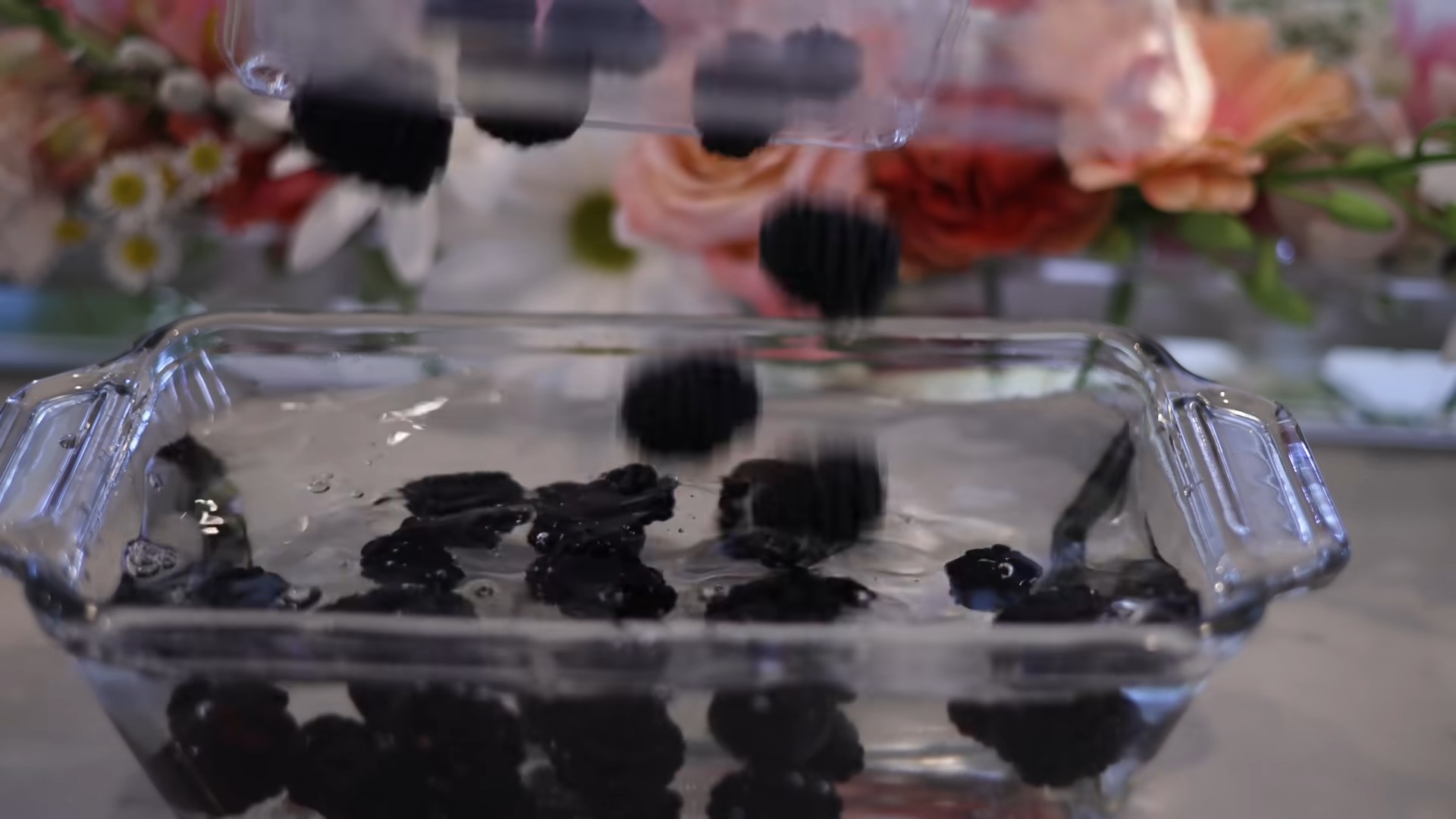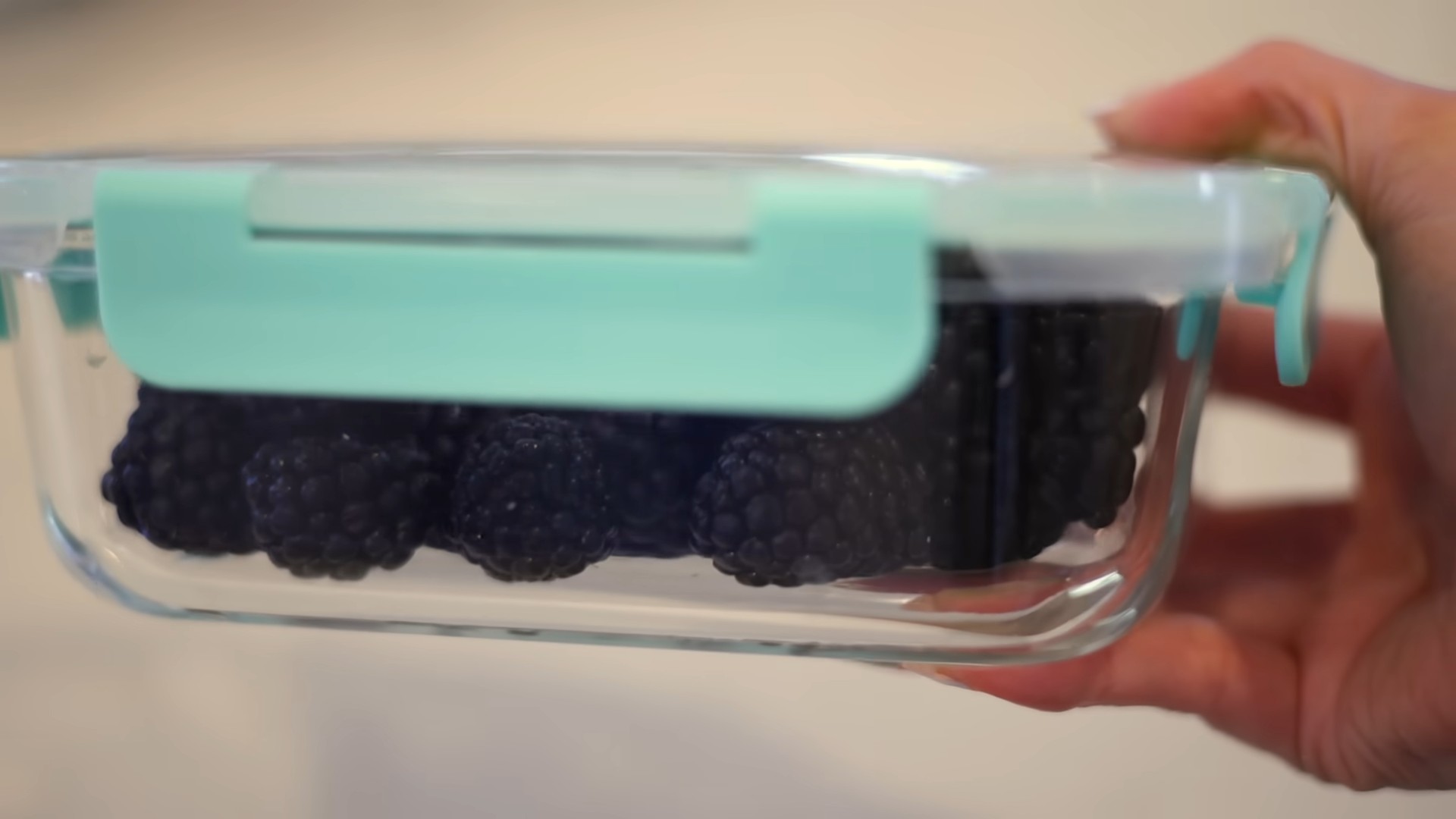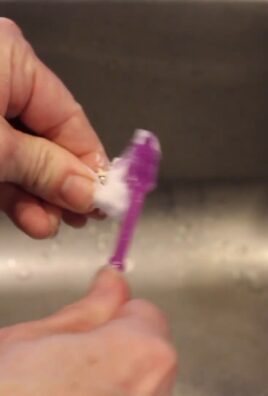Wash fruits with vinegar – it sounds a little strange, right? But trust me, this simple trick can revolutionize how you prepare your produce and keep your family healthy! I know, I know, the idea of dunking your juicy strawberries or crisp apples in vinegar might seem counterintuitive. But before you dismiss it, let’s dive into why this age-old practice is making a serious comeback.
For centuries, vinegar has been used as a natural cleaning agent. Think back to your grandmother’s cleaning rituals – chances are, vinegar played a starring role! While we’ve embraced modern cleaning solutions, the wisdom of using natural, effective methods like vinegar is resurfacing, especially when it comes to our food.
Why is this DIY fruit-washing hack so important now? Well, in today’s world, our fruits are often coated with pesticides, waxes, and who-knows-what-else during their journey from the farm to our tables. Simply rinsing them with water often isn’t enough to remove these unwanted residues. That’s where wash fruits with vinegar comes in! This simple solution helps to break down those stubborn coatings, leaving you with cleaner, safer, and tastier fruits. Ready to learn how to do it? Let’s get started!

DIY Fruit Wash: The Vinegar Power-Up!
Hey everyone! I’m always looking for ways to keep my family healthy, and that starts with what we eat. Store-bought fruits and veggies can be coated in all sorts of things – pesticides, waxes, and just plain old dirt. Yuck! So, I’ve been using this super simple DIY fruit wash for ages, and I wanted to share it with you. It’s cheap, effective, and uses ingredients you probably already have in your pantry. Let’s get started!
Why Vinegar?
Before we dive into the how-to, let’s talk about why vinegar is my go-to for cleaning fruits and veggies. Vinegar, especially white vinegar, is a mild acid. This acidity helps to break down the waxy coating often found on fruits, as well as loosen dirt and kill bacteria. It’s a natural disinfectant and a much safer alternative to harsh chemicals. Plus, it’s super affordable!
What You’ll Need
Here’s a quick list of what you’ll need to make your own fruit and veggie wash:
* White vinegar (the star of the show!)
* Water (to dilute the vinegar)
* A large bowl or your clean sink
* A colander or salad spinner
* Clean towels or paper towels for drying
* Optional: A few drops of lemon essential oil (for a fresh scent, but totally optional!)
Step-by-Step Instructions: The Vinegar Soak Method
This is my preferred method because it’s super easy and effective for most fruits and vegetables.
1. Prepare the Vinegar Solution: In your large bowl or clean sink, mix together 1 part white vinegar and 3 parts water. For example, if you’re using a large bowl, you might use 1 cup of white vinegar and 3 cups of water. If you’re using your sink, you might use 1/2 cup of vinegar and 1 1/2 cups of water. The key is to maintain that 1:3 ratio. If you’re adding lemon essential oil, now’s the time to add a few drops (2-3 drops should be plenty!).
2. Submerge the Fruits and Vegetables: Gently place your fruits and vegetables into the vinegar solution. Make sure they’re fully submerged. For delicate fruits like berries, be extra careful not to crush them.
3. Soak for 15-20 Minutes: This is where the magic happens! Let the fruits and vegetables soak in the vinegar solution for at least 15 minutes, but no more than 20 minutes. This allows the vinegar to work its magic, loosening dirt, wax, and any other unwanted residue. I usually set a timer so I don’t forget.
4. Rinse Thoroughly: After the soaking time is up, remove the fruits and vegetables from the vinegar solution and rinse them thoroughly under cool, running water. This is crucial to remove any lingering vinegar taste. I like to rub the surface of the fruits and vegetables gently with my hands while rinsing to ensure all the residue is gone.
5. Dry Completely: This is an important step! Use clean towels or paper towels to dry the fruits and vegetables completely. Moisture can encourage mold growth, so you want to make sure they’re nice and dry before storing them. A salad spinner works great for leafy greens!
6. Store Properly: Store your freshly washed and dried fruits and vegetables in the refrigerator in airtight containers or bags. This will help them stay fresh and crisp for longer.
Step-by-Step Instructions: The Vinegar Spray Method
This method is great for fruits and vegetables with thicker skins, like apples, cucumbers, and bell peppers.
1. Prepare the Vinegar Spray: In a clean spray bottle, mix together 1 part white vinegar and 9 parts water. This is a more diluted solution than the soak method. For example, you can use 1/4 cup of white vinegar and 2 1/4 cups of water.
2. Spray the Fruits and Vegetables: Spray the fruits and vegetables thoroughly with the vinegar solution, making sure to coat all surfaces.
3. Let it Sit for a Few Minutes: Allow the vinegar solution to sit on the fruits and vegetables for about 2-3 minutes. This gives it time to loosen any dirt or residue.
4. Rinse Thoroughly: Rinse the fruits and vegetables thoroughly under cool, running water. Again, rub the surface gently with your hands to ensure all the vinegar is removed.
5. Dry Completely: Use clean towels or paper towels to dry the fruits and vegetables completely.
6. Store Properly: Store your freshly washed and dried fruits and vegetables in the refrigerator in airtight containers or bags.
Tips and Tricks for the Best Results
* Don’t Use Too Much Vinegar: While vinegar is effective, using too much can leave a sour taste on your fruits and vegetables. Stick to the recommended ratios.
* Adjust Soaking Time for Delicate Fruits: For delicate fruits like berries, you might want to reduce the soaking time to 10-15 minutes to prevent them from becoming mushy.
* Wash Before Storing: It’s best to wash your fruits and vegetables as soon as you bring them home from the store. This will help prevent the spread of bacteria and keep them fresh for longer.
* Don’t Wash Berries Too Far in Advance: Berries are best washed right before you’re ready to eat them. Washing them too far in advance can make them spoil faster.
* Use a Vegetable Brush for Root Vegetables: For root vegetables like potatoes and carrots, you can use a vegetable brush to scrub away any stubborn dirt after soaking.
* Consider Organic Vinegar: If you’re concerned about chemicals, you can use organic white vinegar.
* Smell Test: After rinsing, give your fruits and vegetables a quick sniff. If you can still smell vinegar, rinse them again.
* Don’t Mix Vinegar with Other Cleaners: Never mix vinegar with bleach or other cleaning products, as this can create harmful fumes.
* Re-use the Vinegar Solution (With Caution): You can re-use the vinegar solution for a second batch of fruits and vegetables, but I recommend discarding it after that. It will start to accumulate dirt and bacteria.
* Vinegar for Leafy Greens: For leafy greens like lettuce and spinach, I like to use the soak method. After soaking, I use a salad spinner to remove excess water.
* Vinegar for Grapes: Grapes often have a waxy coating. The vinegar soak method works wonders for removing this coating.
* Vinegar for Apples: Apples are notorious for having a waxy coating. The vinegar spray method is perfect for cleaning apples.
* Vinegar for Melons: Even though you don’t eat the rind of a melon, it’s still important to wash it before cutting into it. This prevents bacteria from the rind from getting into the flesh of the melon. The vinegar spray method works well for melons.
Addressing Common Concerns
* Will my fruits and vegetables taste like vinegar? No, as long as you rinse them thoroughly after soaking or spraying, they shouldn’t taste like vinegar at all.
* Is this method safe for all fruits and vegetables? Yes, this method is generally safe for all fruits and vegetables. However, use caution with delicate fruits like berries.
* Can I use other types of vinegar? While white vinegar is the most effective for cleaning, you can use apple cider vinegar as a substitute. However, it may not be as effective at removing wax and dirt. I don’t recommend using balsamic vinegar or other flavored vinegars.
* How often should I wash my fruits and vegetables? You should wash your fruits and vegetables every time you’re ready to eat them.
Beyond the Basics: Other Natural Fruit and Vegetable Washes
While I swear by my vinegar wash, there are other natural options you can explore:
* Baking Soda Wash: Mix 1 teaspoon of baking soda with 2 cups of water. Soak your fruits and vegetables for 10-15 minutes, then rinse thoroughly. Baking soda is great for removing pesticides.
* Salt Water Wash: Mix 1 tablespoon of salt with 4 cups of water. Soak your fruits and vegetables for 10-15 minutes, then rinse thoroughly. Salt water can help to draw out dirt and bacteria.
* Lemon Juice Wash: Mix 1 part lemon juice with 3 parts water. Soak your fruits and vegetables for 10-15 minutes, then rinse thoroughly. Lemon juice has antibacterial properties and can also add a fresh scent.
Final Thoughts
I hope this DIY fruit wash guide has been helpful! It’s a simple and effective way to keep your family healthy and safe. Give it a try and let me know what you think! Happy washing!

Conclusion
So, there you have it! This simple yet incredibly effective DIY fruit wash using vinegar is a game-changer for anyone concerned about the cleanliness and safety of their produce. We’ve walked you through the process, highlighting its ease and affordability, but the real magic lies in the peace of mind it provides. Knowing you’re removing a significant portion of surface pesticides, dirt, and bacteria from your fruits before you and your family consume them is invaluable.
Why is this a must-try? Because it’s a proactive step towards a healthier lifestyle. It’s about taking control of what you put into your body and minimizing exposure to potentially harmful substances. Store-bought fruit washes can be expensive and often contain ingredients you might not be comfortable with. This DIY method offers a natural, cost-effective alternative that’s just as, if not more, effective.
Beyond the basic recipe, feel free to experiment! For a citrusy boost and added cleaning power, add a few drops of lemon essential oil to your vinegar solution. If you’re dealing with particularly dirty produce, like root vegetables, consider using a slightly stronger vinegar concentration. You can also adjust the soaking time based on the type of fruit or vegetable – delicate berries might only need a short soak, while apples and pears can benefit from a longer one. Remember to always rinse thoroughly after soaking to remove any lingering vinegar taste.
This DIY fruit wash isn’t just a trend; it’s a sustainable practice that can become a regular part of your kitchen routine. It’s about making informed choices and prioritizing your well-being. We firmly believe that once you experience the difference this simple wash makes, you’ll never go back to simply rinsing your fruits under tap water.
We’re confident that you’ll be amazed by the results. The visible difference in the water after soaking, the enhanced freshness of your produce, and the overall feeling of cleanliness will speak for themselves.
Now, it’s your turn! We wholeheartedly encourage you to try this DIY fruit wash and see the difference for yourself. Don’t just take our word for it – experience the benefits firsthand. And most importantly, we want to hear about your experience! Share your thoughts, tips, and variations in the comments below. Let’s build a community of health-conscious individuals who are committed to making informed choices about the food they consume. Did you notice a difference in the taste or texture of your fruits? Did you find a particular variation that worked exceptionally well for you? We’re eager to learn from your experiences and share them with others. Let’s make this DIY fruit wash a staple in kitchens everywhere!
Frequently Asked Questions (FAQ)
1. Why should I wash my fruits and vegetables with vinegar? Isn’t rinsing with water enough?
Rinsing with water alone can remove some surface dirt and debris, but it’s not very effective at removing pesticides, waxes, and bacteria that may be present on the skin of fruits and vegetables. Vinegar, specifically white distilled vinegar, is a mild acid that helps to break down these substances, making them easier to wash away. It’s a more thorough cleaning method that provides an extra layer of protection for you and your family. While some argue about the effectiveness of different methods, vinegar is a widely accepted and readily available option.
2. What kind of vinegar should I use for washing fruits and vegetables?
The best type of vinegar to use is white distilled vinegar. It’s inexpensive, readily available, and has a neutral odor that won’t affect the taste of your produce. Avoid using other types of vinegar, such as apple cider vinegar or balsamic vinegar, as they may leave a flavor residue or stain lighter-colored fruits and vegetables. The acidity of white distilled vinegar is ideal for cleaning without being harmful.
3. What is the recommended ratio of vinegar to water for the fruit wash?
A good starting point is a ratio of 1 part white distilled vinegar to 3 parts water. For example, you could use 1/4 cup of vinegar and 3/4 cup of water in a bowl or sink. You can adjust the ratio slightly depending on the type of produce and the level of dirtiness. For particularly dirty produce, you might increase the vinegar concentration slightly, but avoid using undiluted vinegar, as it could damage delicate fruits and vegetables.
4. How long should I soak my fruits and vegetables in the vinegar solution?
The soaking time will vary depending on the type of produce. Delicate berries, like strawberries and raspberries, only need a short soak of about 5-10 minutes. Harder fruits and vegetables, like apples, pears, and potatoes, can soak for 15-20 minutes. Avoid soaking produce for longer than 20 minutes, as it could affect the texture and flavor. Always rinse thoroughly after soaking, regardless of the soaking time.
5. Will the vinegar leave a taste or smell on my fruits and vegetables?
If you rinse your fruits and vegetables thoroughly after soaking, the vinegar taste and smell should be minimal or nonexistent. Rinsing is a crucial step in the process. Use cool, running water to remove any lingering vinegar residue. If you’re particularly sensitive to the taste of vinegar, you can add a small amount of baking soda to the rinse water to help neutralize any remaining acidity.
6. Can I use this DIY fruit wash on all types of fruits and vegetables?
Yes, this DIY fruit wash is generally safe to use on all types of fruits and vegetables. However, use caution with delicate leafy greens, as they can become wilted if soaked for too long. For leafy greens, a quick rinse in the vinegar solution followed by a thorough rinse in clean water is usually sufficient. Also, be mindful of porous fruits and vegetables, as they may absorb more of the vinegar solution.
7. How often should I wash my fruits and vegetables with vinegar?
Ideally, you should wash your fruits and vegetables with vinegar every time you bring them home from the store or farmers market. This will help to remove any contaminants that may have accumulated during transportation and handling. Even if you plan to peel the fruit or vegetable, washing it beforehand is still a good idea to prevent transferring contaminants to the edible portion during peeling.
8. Can I reuse the vinegar solution?
No, it’s not recommended to reuse the vinegar solution. After soaking your fruits and vegetables, the solution will contain dirt, pesticides, and bacteria that you’ve removed from the produce. Reusing the solution would simply reintroduce these contaminants to other fruits and vegetables. It’s best to discard the solution after each use.
9. Is this DIY fruit wash effective against all types of pesticides?
While this DIY fruit wash is effective at removing many types of pesticides, it may not remove all of them completely. Some pesticides are designed to penetrate the skin of fruits and vegetables, making them more difficult to remove. However, this wash will significantly reduce the amount of pesticide residue on the surface of your produce, providing a valuable layer of protection.
10. Where should I store my fruits and vegetables after washing them with vinegar?
After washing and thoroughly drying your fruits and vegetables, store them in the refrigerator in airtight containers or bags. This will help to keep them fresh and prevent them from spoiling. Some fruits and vegetables, like tomatoes and avocados, are best stored at room temperature until they are ripe. Refer to specific storage guidelines for each type of produce to maximize their shelf life.




Leave a Comment